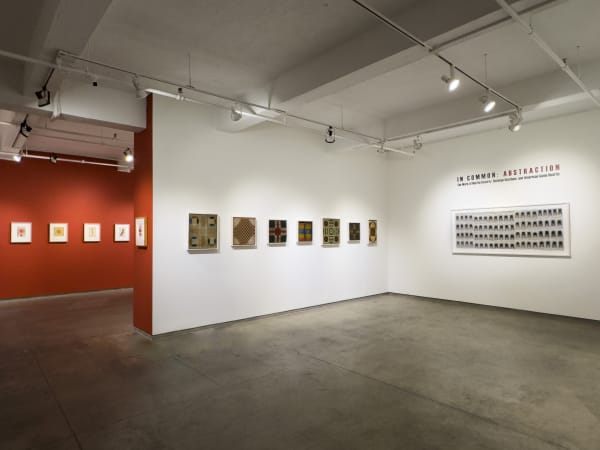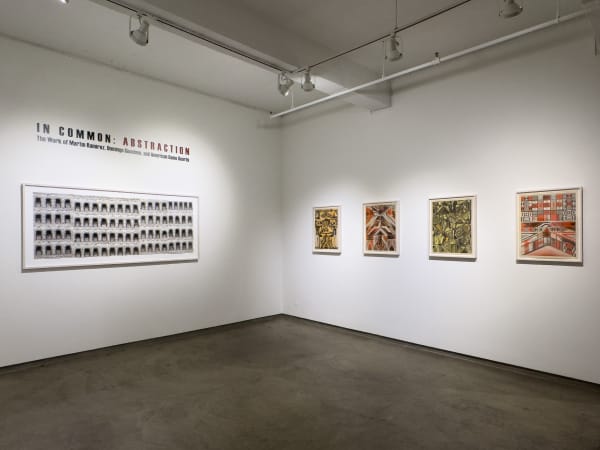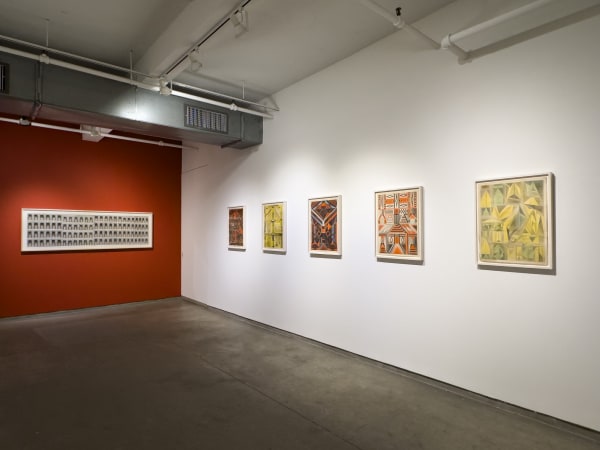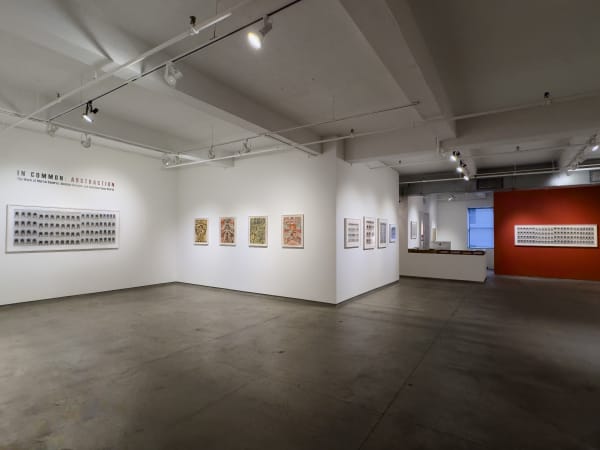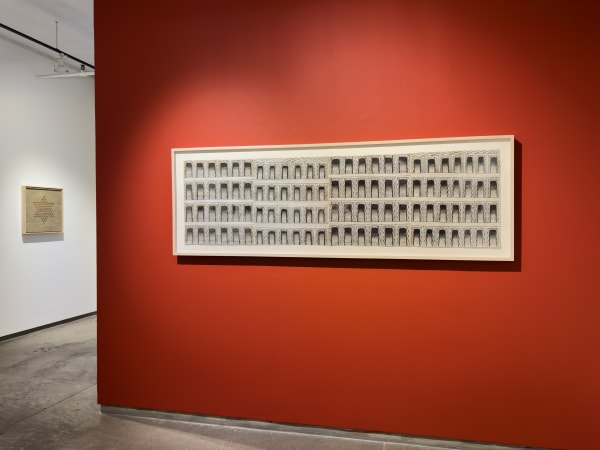In Common: Abstraction. The Work of Martín Ramírez, Domingo Guccione, and American Game Boards: Gallery One
This exhibition features the drawings of Martín Ramírez (Mexican, 1895 – 1963) and the geometric abstract work of Domingo Guccione (Argentinian, 1898 – 1966) juxtaposed with vintage American game boards—created by unknown artists between the late 19th century and the first half of the 20th century. Through the dialogue between these parallel visions—originating in radically different contexts—we consider the visual language of abstraction as a bridge between self-taught, vernacular, and modern art.
MARTÍN RAMÍREZ (1895 – 1963)
Martín Ramírez was born in Jalisco, Mexico, and is widely known as one of the preeminent self-taught masters of the 20th century. Thrust by political and religious upheavals caused by the Mexican Revolution and seeking to support his family, Ramírez relocated to the United States in 1925. He worked as an impoverished immigrant in the California mines and railroads until he was picked up by police in 1931—reportedly in a disoriented state. Ramírez was eventually declared schizophrenic (with previous diagnoses of manic-depression and catatonic dementia praecox). He was committed first at Stockton State Hospital and then at the DeWitt State Hospital in Auburn, where he spent the rest of his life. It was there where he discovered art and created the complex and compelling drawings for which he is known.
Over the course of his life, Ramírez produced around 500 works. The imagery is often reminiscent of his own life experiences: Mexican Madonnas, animals, cowboys, trains, and landscapes merge with scenes of American culture and create a profound documentation of a Mexican living and working in the United States. Compositionally, he renders space into multi-dimensional layouts, often using rhythmic repetition and gentle shading. Later in his life, he incorporated collage into his works, adding newspaper clippings and previous drawings for depth and texture.
Ramírez’s technical skill, stylistic evolution, and thematic coherence led Roberta Smith of the New York Times to call him “simply one of the greatest artists of the 20th century.” In 2015, the United States Postal Service released a set of 5 commemorative “Martin Ramirez” Forever stamps, which marked the first time that an “outsider” artist and a Mexican immigrant was featured on a USPS Stamp.
DOMINGO GUCCIONE (1898 – 1966)
Domingo Guccone was born in Buenos Aires to Italian parents. He was a trained classical musician, working as a concert guitarist and instructor to many students, but was never exposed to visual art—and in fact suffered from color blindness. He drew mostly in private and claimed to be channeling a mysterious force that took a hold of him in bouts of creative energy—where his body and mind were not his own. Accordingly, Guccione could (or would) not explain his finished works and in turn ask viewers what they saw in them.
Guccione did not sketch his drawings, working quickly and with a minimal range of materials; thick sheets of paper, graphite, colored pencils, and a straight piece of wood, about 4” long, with no measurement markings. The 222 works that he left behind, which were produced between 1930 and 1955, are compact kaleidoscopic arrangements where geometric patterns intertwine with irregular linear shapes. They are both deeply abstract and reminiscent of futuristic architectural landscapes; of buildings and labyrinths that fluctuate between flatness and three-dimensionality, interweaving densely packed color with subtle shadings.
Guccione's work had never been seen outside of his immediate family until his debut with Ricco/Maresca at the Independent Art Fair in New York (March 2020).
VINTAGE AMERICAN GAME BOARDS
LATE 19TH CENTURY - FIRST HALF OF THE 20TH CENTURY
Created between the late 19th century and the first half of the 20th century as functional objects by unknown artists, American game boards transcend their original utilitarian purpose and stand on their own as cousins of modern art. This exhibition presents examples of parcheesi, checkers, and Chinese checkers, decontextualizing these works to highlight their concrete beauty, while acknowledging the mystery and gravitas that they possess as objects that once participated in everyday life.
In the 19th century, most game boards were homemade for personal use or produced in domestic workshops for sale within the immediate community—much in the same way as bird decoys, dolls, and quilts. Artists used the materials at hand; easily accessible, generally native hardwoods and standard oil-based household paint—whose durability could withstand the continuous quiet abrasion of the moving parts on the surface.
In the informal environment of a young American nation, artists transformed pre-established patterns into personal compositions, taking creative liberties analogous to jazz—if we think about the framework of the game as a basic melody and of each artist’s visual execution as a kind of musical improvisation. In the best of cases, game boards embody this powerful junction of familiar and new information; of tradition and innovation, with the latter manifesting itself through various degrees of abstraction, deconstruction, and formal embellishment or distillation.
Click here to visit the online viewing room for this show and learn more about the works exhibited.



